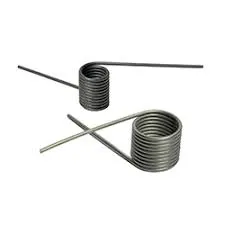
- Mobile Phone
- +8613931874955
- sales@cntcmetal.com
welded wire reinforcement for concrete
The Importance of Welded Wire Reinforcement in Concrete Structures
Welded wire reinforcement (WWR) has become a vital component in the realm of concrete construction, influencing the integrity, durability, and performance of various structures. This article explores the significance of welded wire reinforcement, its benefits, and its applications in modern construction.
What is Welded Wire Reinforcement?
Welded wire reinforcement is made from high-strength steel wires that are welded together at intersecting points to form a grid-like structure. The primary purpose of WWR is to enhance the tensile strength of concrete, which is inherently strong under compression but weak in tension. By incorporating welded wire reinforcement, builders can create concrete elements that can withstand various loads and stresses.
Benefits of Welded Wire Reinforcement
1. Enhanced Structural Integrity WWR provides additional tensile strength, allowing concrete to resist cracking and deformation under applied loads. This is particularly essential in slabs, pavements, and walls where tensile forces are prevalent.
2. Ease of Installation The grid form of welded wire makes it easier to handle and place within concrete forms compared to traditional rebar. Its uniform spacing and pre-welded intersections reduce the labor and time required for installation, leading to increased efficiency on construction sites.
3. Cost-Effectiveness While the initial investment in welded wire reinforcement may seem higher than other reinforcement methods, the overall cost can be lower due to reduced labor costs and faster installation times. Additionally, the durability provided by WWR can lead to savings in maintenance and repair over the lifespan of the structure.
welded wire reinforcement for concrete

4. Versatility Welded wire reinforcement can be used in various applications, including residential, commercial, and industrial projects. It is suitable for floors, pavements, walls, and even precast concrete elements, adapting well to different structural requirements.
5. Improved Concrete Performance The even distribution of reinforcement provided by welded wire enhances the overall performance of the concrete. It allows for better crack control, reduces shrinkage, and can minimize the risk of delamination in thin concrete sections.
Applications of Welded Wire Reinforcement
Welded wire reinforcement is prevalent in numerous construction applications. In residential construction, it is commonly used in basement floors and driveways to mitigate cracking due to soil movement and temperature fluctuations. In commercial buildings, WWR finds its place in large floor slabs that experience heavy loads.
Furthermore, WWR is employed in bridge construction, parking garages, and industrial facilities where durability and load-bearing capabilities are paramount. Its flexibility allows engineers to design more innovative structures while ensuring safety and reliability.
Conclusion
In summary, welded wire reinforcement plays a crucial role in modern concrete construction. Its ability to enhance tensile strength, ease of installation, and cost-effectiveness make it a preferred choice among engineers and contractors. As the construction industry continues to evolve, the application of welded wire reinforcement will undoubtedly expand, allowing for safer, more durable, and efficient structures that meet the growing demands of a modern society. By harnessing the benefits of WWR, builders can ensure that their projects stand the test of time, contributing to the longevity and safety of infrastructure worldwide.
share:
-
The Ultimate Solution for Display Needs: Wire Grid PanelsNewsMay.06,2025
-
The Ultimate Guide to Galvanized Steel WireNewsMay.06,2025
-
Iron Binding Wire: The Ideal Solution for Your NeedsNewsMay.06,2025
-
Explore the Strength and Versatility of Galvanized Welded Wire FabricNewsMay.06,2025
-
Discover the Durability and Versatility of PVC Galvanized WireNewsMay.06,2025
-
Discover Quality China Stainless Steel Wire MeshNewsMay.06,2025
-
Understanding Wall Ties: Types and ImportanceNewsApr.28,2025



















